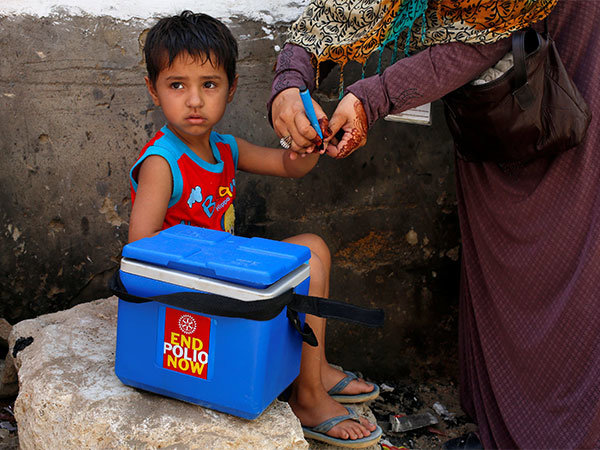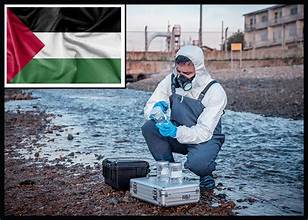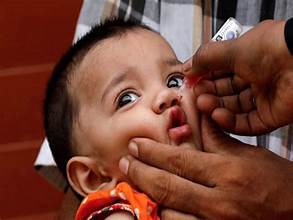In a troubling development for Pakistan’s public health sector, the poliovirus has been detected in sewage samples collected from 20 different districts across the country. This alarming finding has raised fresh concerns over the resurgence of a virus that the nation has long struggled to eradicate. Despite extensive vaccination drives and public health campaigns, the presence of the virus in multiple urban and rural locations underscores the ongoing challenge of eliminating polio from Pakistan entirely.
A Wake-Up Call for Public Health Authorities
The detection of poliovirus in environmental samples, especially from a wide range of districts, is a clear sign that the virus is still actively circulating in communities. While no new human cases may have been reported in some of these districts, the presence of the virus in sewage suggests that infected individuals—possibly asymptomatic carriers—are shedding the virus into the environment.

Environmental surveillance, particularly sewage testing, plays a critical role in tracking the silent transmission of polio. It allows authorities to detect the virus even in the absence of reported clinical cases, giving them a valuable early warning system to take immediate action.
The Districts Affected
Although the government has not released the complete list of all 20 affected districts, reports indicate that samples testing positive for poliovirus were found in a mix of major cities and remote regions. These likely include high-risk areas in provinces such as Punjab, Sindh, Balochistan, and Khyber Pakhtunkhwa—regions with a history of polio outbreaks and inconsistent immunization coverage.
In urban centers like Karachi, Lahore, and Peshawar, the detection of the virus is particularly worrying due to high population densities, frequent internal migration, and insufficient sanitation infrastructure—all of which facilitate the rapid spread of the virus.
Polio in Pakistan: A Persistent Challenge
Pakistan remains one of only two countries in the world—alongside Afghanistan—where polio is still endemic. Despite numerous vaccination campaigns, logistical hurdles, vaccine hesitancy, misinformation, and occasional attacks on healthcare workers have all contributed to the virus’s persistence.
The detection in 20 districts represents a setback to the country’s polio eradication efforts. It reveals gaps in immunization coverage and points to the need for intensified efforts to reach every child, especially in hard-to-access or conflict-affected areas.
The Role of Vaccination

Oral Polio Vaccine (OPV) continues to be the cornerstone of Pakistan’s polio eradication strategy. The recent detection of the virus reinforces the need to maintain high levels of population immunity through mass immunization campaigns.
The government and its partners, including UNICEF, WHO, and Gavi, are expected to ramp up nationwide polio drives, focusing especially on the affected districts. Door-to-door vaccination campaigns, public awareness initiatives, and engagement with community leaders will be critical in boosting vaccine acceptance.
Surveillance and Sanitation
Besides vaccination, improving sanitation and hygiene practices is crucial to halting the transmission of poliovirus, which spreads via the fecal-oral route. Contaminated water and food, poor sewage disposal, and lack of access to clean toilets contribute significantly to the spread of the virus.
The presence of poliovirus in sewage is a stark reminder that until broader public health infrastructure is improved—including access to clean drinking water and proper sanitation—efforts to eradicate polio will remain vulnerable.
Public Cooperation Is Essential

The success of any eradication effort hinges not just on government actions but also on public cooperation. Parents must ensure their children receive all necessary doses of the polio vaccine. Myths and misinformation, especially those spread through social media and local word of mouth, must be countered with factual and accessible health education.
Engaging local influencers, religious scholars, and healthcare workers to advocate for vaccination has proven effective in some regions and should be expanded.
International Implications
The continued circulation of poliovirus in Pakistan has implications beyond its borders. It poses a risk of international spread, which could undermine global eradication efforts. Travel restrictions and vaccination requirements for international travelers from Pakistan may also remain in place if the situation is not brought under control swiftly.
What’s Next?

In response to these findings, authorities are expected to enhance surveillance and conduct rapid response immunization campaigns in the affected districts. Environmental sampling efforts will also likely be intensified to monitor the impact of these interventions and track the virus’s movement.
Moreover, renewed attention from international partners may help Pakistan access the resources and technical support needed to plug the remaining gaps in its polio eradication strategy.
Conclusion
The detection of poliovirus in sewage samples from 20 districts across Pakistan is a stark reminder that the fight against polio is far from over. It highlights the need for renewed urgency, greater public engagement, and sustained political and financial commitment to achieving a polio-free future. While progress has been made, the journey is not yet complete—and every unvaccinated child remains at risk. Now more than ever, united and coordinated action is needed to ensure that polio becomes a disease of the past, not a recurring threat.
`



